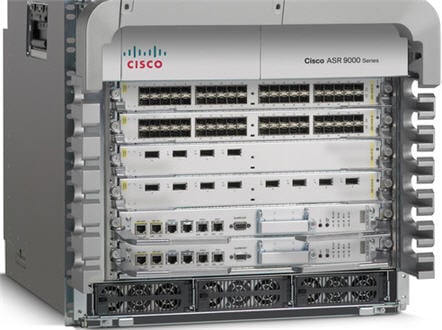 With Networking Technologies evolving at lightnign speed, the challenge is being faced by IT organizations as they rethink their approach to routing, they need to ensure that the routers that they deploy today can support the current requirements and the current enabling technologies. These routers should have the flexibility to provide support for the requirements and the enabling technologies that will emerge over the next several years. The bandwidth requirement based on ever growing traffic outbound/inbound from the company sites is bringing the best to the knees. This is highly complex because it is impossible to predict with certainty the specific new requirements and technologies that will impact a particular IT organization in the future. It is, however, possible to state with certainty that there will be new requirements and new technologies and that the organization’s routing infrastructure will have to support those requirements and technologies.
With Networking Technologies evolving at lightnign speed, the challenge is being faced by IT organizations as they rethink their approach to routing, they need to ensure that the routers that they deploy today can support the current requirements and the current enabling technologies. These routers should have the flexibility to provide support for the requirements and the enabling technologies that will emerge over the next several years. The bandwidth requirement based on ever growing traffic outbound/inbound from the company sites is bringing the best to the knees. This is highly complex because it is impossible to predict with certainty the specific new requirements and technologies that will impact a particular IT organization in the future. It is, however, possible to state with certainty that there will be new requirements and new technologies and that the organization’s routing infrastructure will have to support those requirements and technologies.
There are different approaches that can be followed for future proofing your investments. These methodologies can help IT orgs to save money and plan for future while cutting costs optimally. One trend that is impacting virtually all IT organizations is that the number of different Web-based applications traversing the enterprise network is growing rapidly because of the webification of enterprise applications such as ERP and CRM, plus the utilization of emerging Web-based application architectures such as SOA, SaaS, cloud computing and mashups. This trend increases the importance of identifying which Web applications are business critical so that the IT organization can provide preferential treatment to these applications vs. the more mundane or recreational applications that are also Web-based; for example, Internet radio. Routers that can base QoS scheduling and forwarding behavior on deep-packet inspection (DPI) will be able to parse application headers allowing all critical business applications, including VoIP and videoconferencing, to receive preferential treatment and enabling recreational or unwanted application traffic to be either eliminated or rate limited.
We believe that implementing router-based QoS at key points of aggregation within the network may offer an attractive alternative to managing an end-to-end QoS scheme involving numerous client end systems. We believe this because the vast majority of IT organizations that we work with have already implemented QoS. However, because of the complexity that is associated with managing an end-to-end QoS scheme involving numerous client end systems, only a minority of them can effectively manage their QoS implementation.
WAN Experts share best practices on WAN issues from optimization to management as quoted below:
IT organizations that are looking to future proof their router purchases should also insist that any router they purchase support IP Multicast. IP Multicast provides for the efficient use of WAN bandwidth by enabling the simultaneous delivery of content to large numbers of recipients dispersed throughout the network. Applications leveraging IP multicast include IPTV for corporate communications or distance learning, video conferencing, as well as the distribution of software, stock quotes, and news.
Our next WAN newsletter will be our last for a while on the topic of enterprise routing. You can read more about the need to rethink routing here.
a WordPress rating system
a WordPress rating system

Hello,
I am from Network magazine,
good ideas are presented, Just to add to it, there are certain products based on NetworkIntelligence that lets u predict the future capacity of your network.
One that i know is Oracle Communications Network Intelligence, its a good product and provides decent estimations for ur network.
a WordPress rating system
a WordPress rating system
Network technologies are becoming so advance. The technology is changing quite rapidly. Future technologies will come with some better improvements. It is an awesome content that guide quite wonderfully.
a WordPress rating system
a WordPress rating system